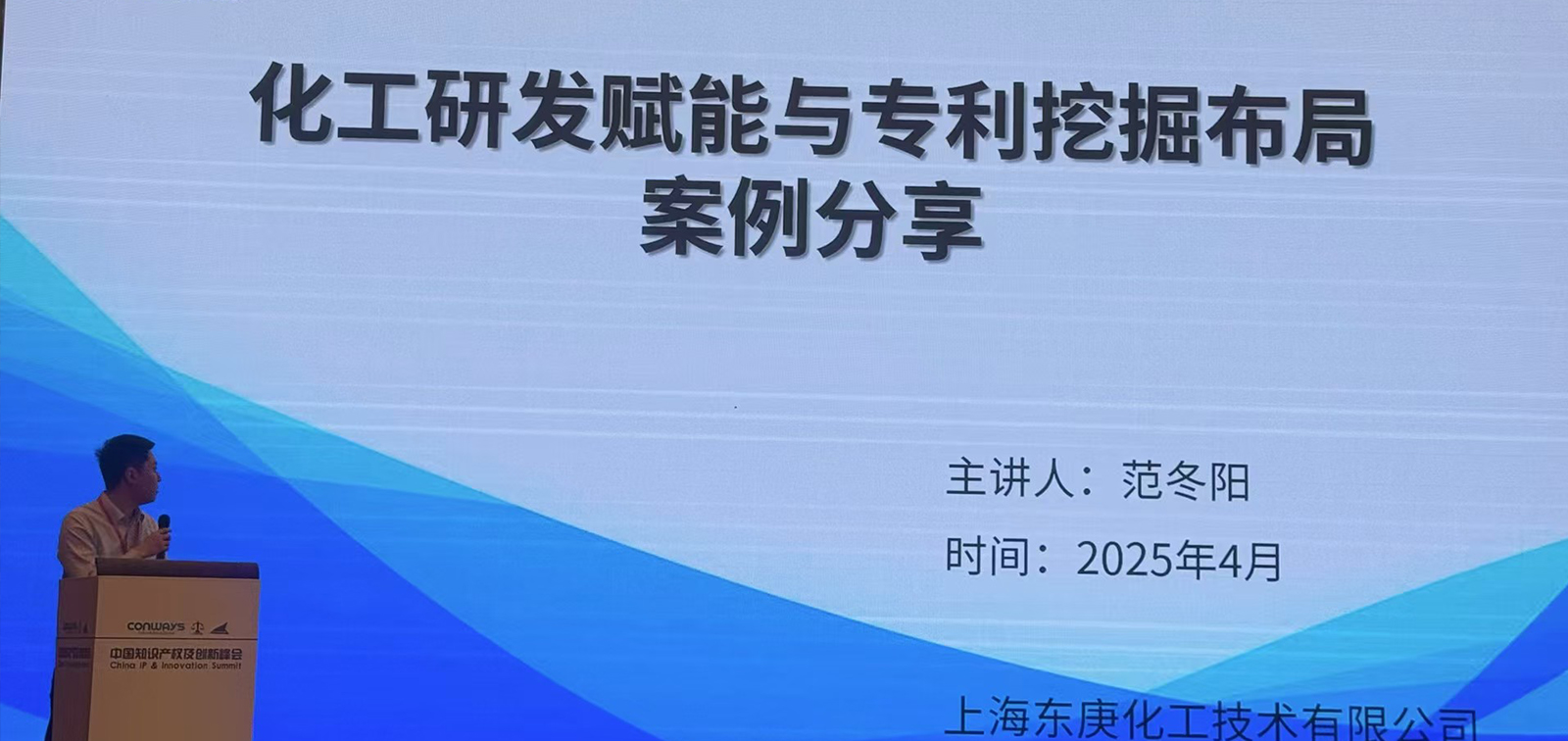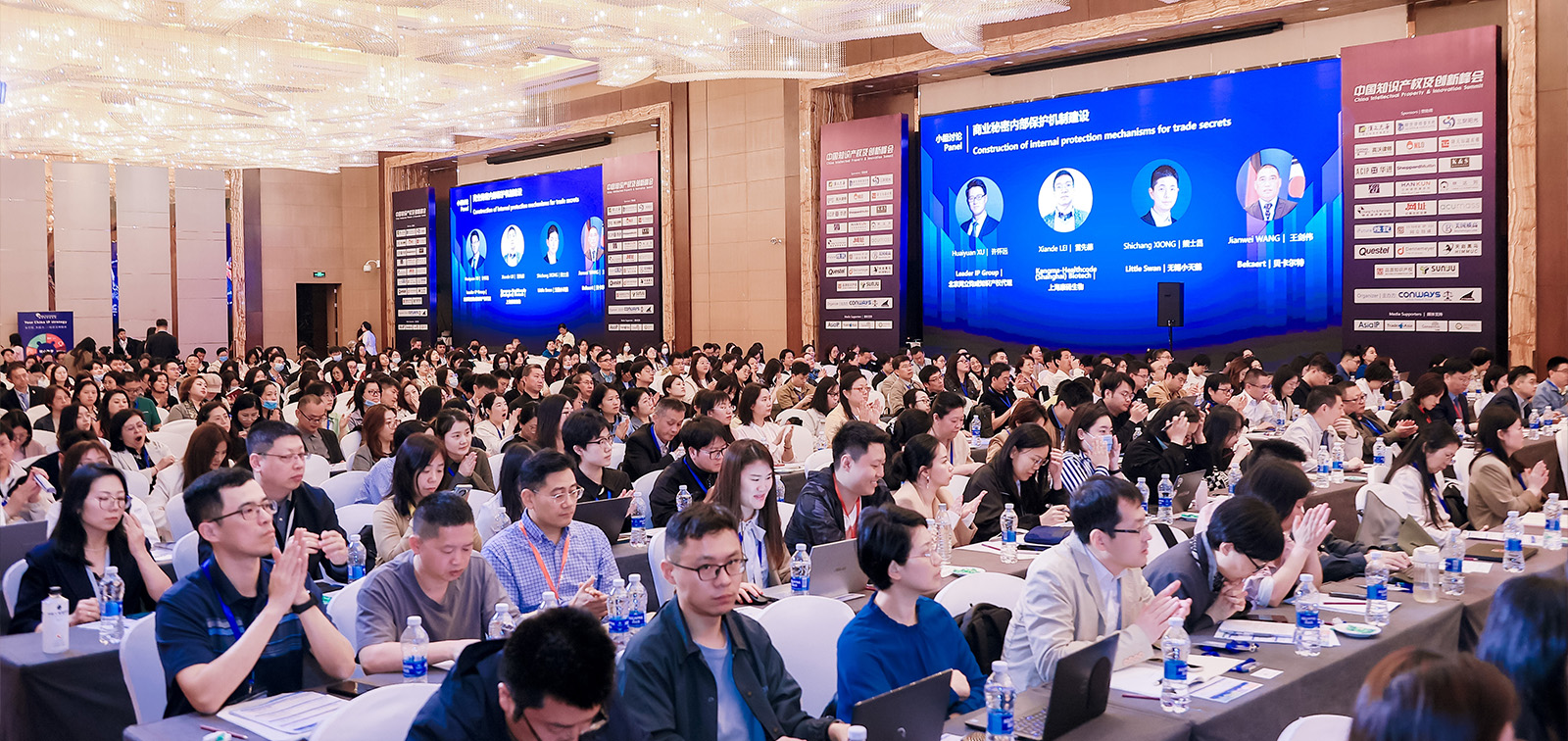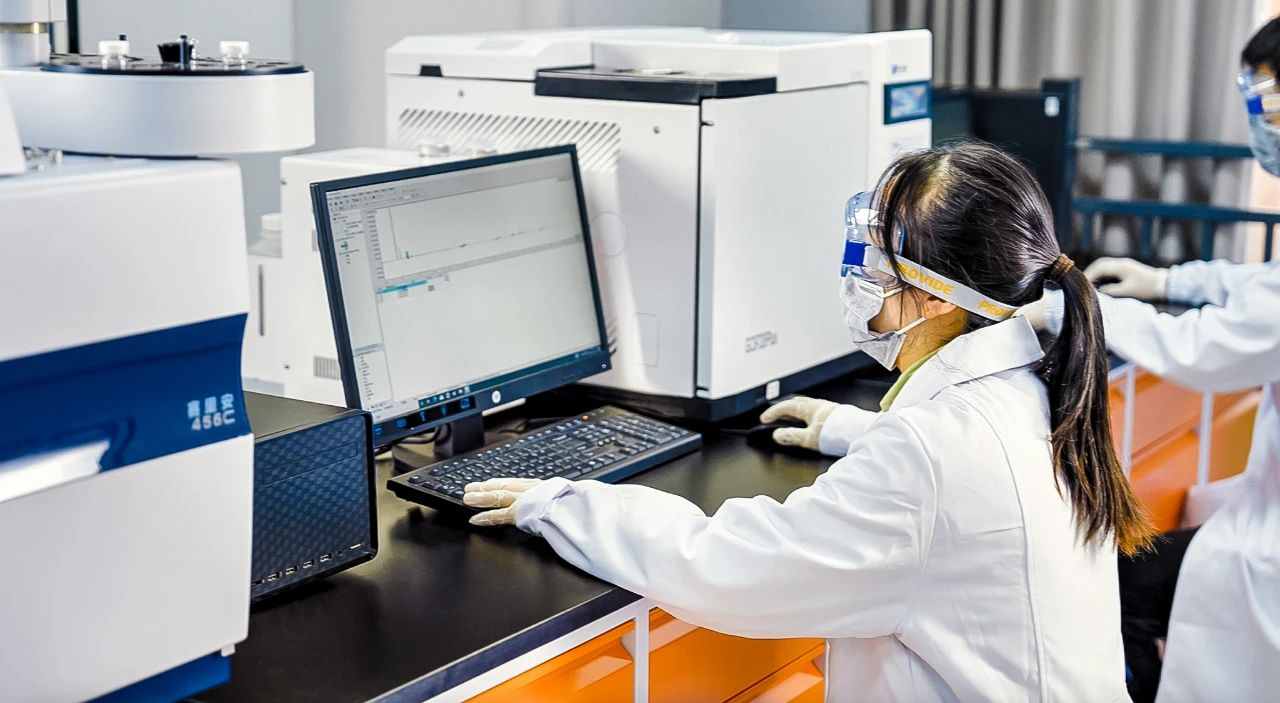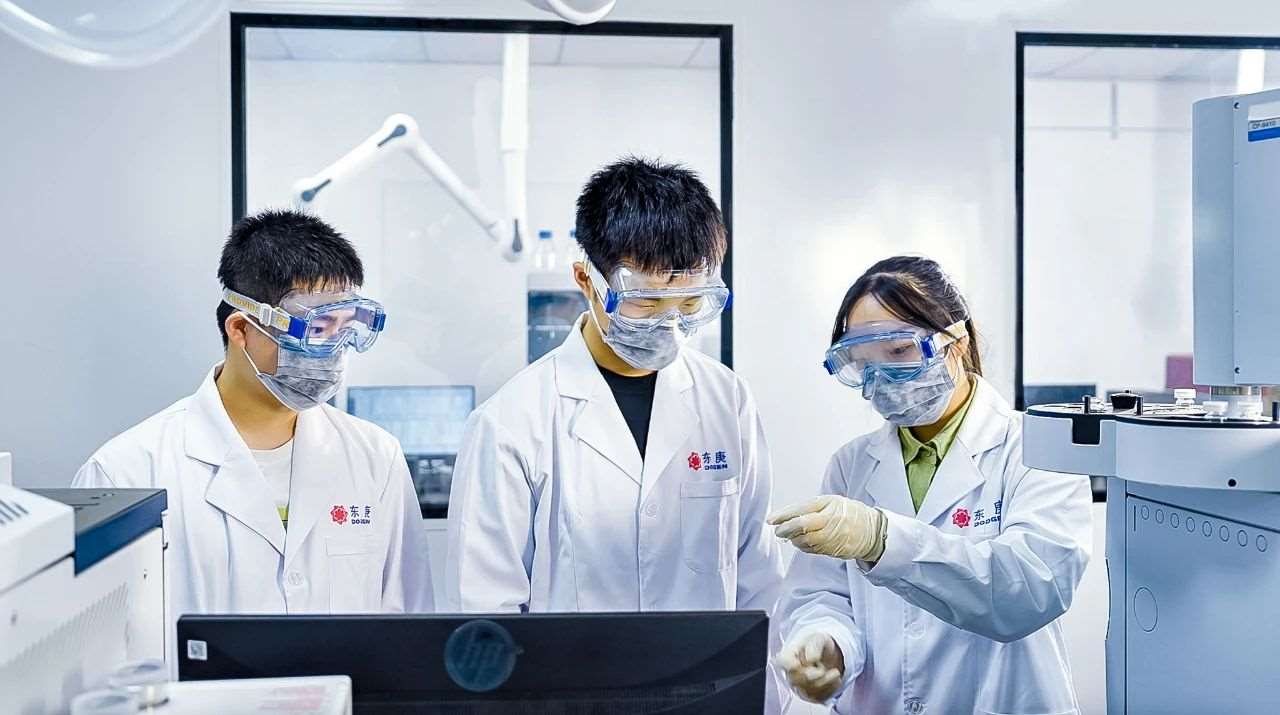In April 2025, during China's National Intellectual Property Week, DODGEN was invited to participate in the Chemical Industry Forum of the China Intellectual Property Innovation Summit (CIPIS).
At the event, Mr. Fan Dongyang, Head of Intellectual Property at DODGEN, delivered a keynote speech titled "Empowering Chemical R&D and Strategic Patent Deployment." In his presentation, he systematically outlined how DODGEN integrates technological innovation with intellectual property strategy to transform R&D achievements into tangible commercial value.


【Full-Chain Deployment, Multi-Dimensional Protection,Building a Robust Patent “Moat”】
As AI technology becomes deeply integrated across industries, the efficiency of R&D has significantly improved—but so has the risk of imitation and intellectual property infringement. At DODGEN, AI is not only a tool to optimize reactor design and accelerate process package development, but also a catalyst for rethinking our patent strategy.
We have embedded AI throughout the entire R&D process—for example, using intelligent algorithms to predict reaction pathways and simulate separation efficiency. However, the high mobility of data assets also introduces potential security risks. As a result, strategic patent deployment has become an essential safeguard.
To strengthen its intellectual property protection,DODGEN has implemented four key strategies:
1. AI-Driven Patent Search Training
R&D teams are trained to use AI tools and the PatSnap system to swiftly identify technological gaps and uncover high-value patent opportunities.
2. Strategic Mindset Shift
Engineers are encouraged to move beyond traditional problem-solving approaches and adopt a “patent-first” mindset, expanding patent coverage through diversified technical pathway design.
3. Cross-Departmental Collaboration
DODGEN has established a “Golden Triangle” model that integrates R&D, IP, and marketing departments, embedding commercialization and protection strategies from the outset of every innovation project.
4. Risk Control Mechanism
A tri-party review process involving R&D, legal, and marketing teams has been launched. This includes dynamic patent mapping to monitor competitor technologies in real-time, and the proactive deployment of peripheral technology packages around core patents—forming a dual-layer “innovation + circumvention” protection moat.
DODGEN consistently demonstrates in practice that we not only prioritize research and development, but also place strong emphasis on patent protection—enhancing our competitive edge in the industry.
【A Revolution in Mindset, A Strategic Awakening,Injecting a “Booster Shot” into R&D Innovation】
Intellectual property strategy is by no means just simple patent protection; it is both a shield for risk defense and a sword for market expansion. At DODGEN, it has activated the deep extension of the innovation chain toward industrial applications.
Traditional R&D often focuses on technical feasibility. However, by embedding IP thinking into our innovation process,DODGEN drives a mindset shift from “technical execution” to “application-driven outcomes.” While researchers are used to solving problems from a purely technical perspective, IP strategy encourages them to step beyond single-solution logic—distributing innovation like a circulatory system across multiple industries, enabling technologies to take root in real-world scenarios.
To strengthen this approach,DODGEN has implemented a “Dual Perspective Workflow”:
01. Technical Feasibility Review – Led by R&D teams, focused on validating scientific principles and experimental data.
02. IP Scenario Simulation – Conducted by the IP department in parallel, mapping potential risks and opportunities along the commercialization pathway. This in turn drives iterative optimization of R&D plans.
This dual-process model has enabled early-stage IP integration in the synthesis and purification processes of compounds such as cinnamic acid and vanillin. By embedding IP strategy as early as the lab-scale trial phase,DODGEN has proactively avoided competitor patent blockades and maximized the protection scope of core and modular technologies—creating strong leverage for future licensing negotiations.


【"Branches and leaves" extend, ecological construction, weaving the industrial network map】
Taking DODGEN's research and development of methyl benzoic acid purification as an example, the team initially focused on enhancing equipment performance through technical breakthroughs. However, with the collaboration of the intellectual property department, the R&D perspective was expanded to include patent coverage for downstream application scenarios:
Patentization of Technical Results
Not only protecting the equipment structure but also applying for patents on key parameters such as separation efficiency thresholds and material compatibility, thus forming technical monopolies.
Extension of Application Scenarios
Designing a patent portfolio that can quickly adapt to the needs of various industries, such as bio-based chemicals and electronic chemicals, achieving "one technology, multiple scenarios."
This "branch-and-leaf" type of expansion layout made the R&D team realize that technological innovation is not an isolated point but a network that can connect the entire industry landscape. When we require the team to consider "how many patents can this technology generate" and "how to cover potential tracks in the next three years" at the beginning of a project, the R&D direction naturally shifts from a single technological breakthrough to systemic innovation.
When R&D personnel begin to "anticipate the future" with an intellectual property mindset, innovation transitions from laboratory papers and data to actual leverage for industry transformation. The ultimate goal of DODGEN's intellectual property strategy is to ensure that every R&D investment can be transformed into commercial value.
【Conclusion】
The competition of the future will be the competition of intellectual property ecosystems.DODGEN will leverage the dual-drive strategy of "technology R&D + intellectual property" to promote a dual leap in R&D efficiency and patent value, helping global clients achieve green and high-end transformation and upgrades.